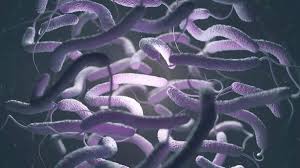
Florida’s Summer Threat: The Rising Risk of Flesh-Eating Bacteria
Share
August 11, 2025 - Florida beaches are timeless draws, but beneath those sun-kissed waves lurks a rare yet potentially deadly threat: Vibrio vulnificus, better known as “flesh-eating bacteria.” While infections remain uncommon, the recent rise in cases is a serious reminder to stay informed before wading in.
What’s Happening Now
This summer, Florida has reported 13 confirmed cases of Vibrio vulnificus infection, with four fatalities so far. Earlier in the season, there were 11 reported cases, showing a steady increase. These infections have been confirmed in multiple counties, including Bay, Broward, Hillsborough, Polk, and St. Johns, with the most recent cases emerging in Bay and Okaloosa. Health officials say this spread underscores the importance of statewide awareness, not just in coastal hotspots.
Why Florida is at Risk

Vibrio thrives in warm, brackish water — the kind found along Florida’s coastline from May through October. After major storms or flooding, the bacteria can spread inland, contaminating water well beyond the beach. This was the case after Hurricane Helene in 2024, when infection numbers spiked. Rising ocean temperatures linked to climate change are also extending the bacteria’s range farther north, meaning this risk is no longer confined to traditional Gulf Coast waters.
How the Infection Strikes
Vibrio vulnificus infections happen in two main ways. The first is through cuts or open wounds that come into contact with contaminated salt or brackish water. Early signs include blisters, swelling, and skin discoloration that can quickly progress to deep tissue damage, sometimes developing into necrotizing fasciitis. The second is by eating contaminated raw shellfish, particularly oysters. In these cases, symptoms often start with nausea, vomiting, diarrhea, and fever, and in severe cases, can lead to septicemia. People with chronic illnesses like liver disease, diabetes, or weakened immune systems are at much higher risk for severe outcomes.
Protecting Yourself
The best defense is prevention. Avoid entering salt or brackish water if you have open cuts, scrapes, recent tattoos, or piercings. When it comes to seafood, cook shellfish thoroughly — raw oysters are a common culprit. Wearing protective footwear and gloves when walking on shell-covered beaches or handling shellfish adds another layer of safety, especially for those at higher risk. If you develop symptoms after being in the water or eating shellfish, seek medical attention immediately. Prompt antibiotic treatment can mean the difference between recovery and serious complications.
Staying Safe Without Skipping the Beach
Floridians and visitors shouldn’t be scared away from enjoying the coast. The key is knowing the risks and taking practical steps to reduce them. This summer’s rise in Vibrio cases is a reminder to enjoy the water smartly — and to keep safety in mind as much as sunscreen and swim gear.
The beach will always be here. Your health should be too.

